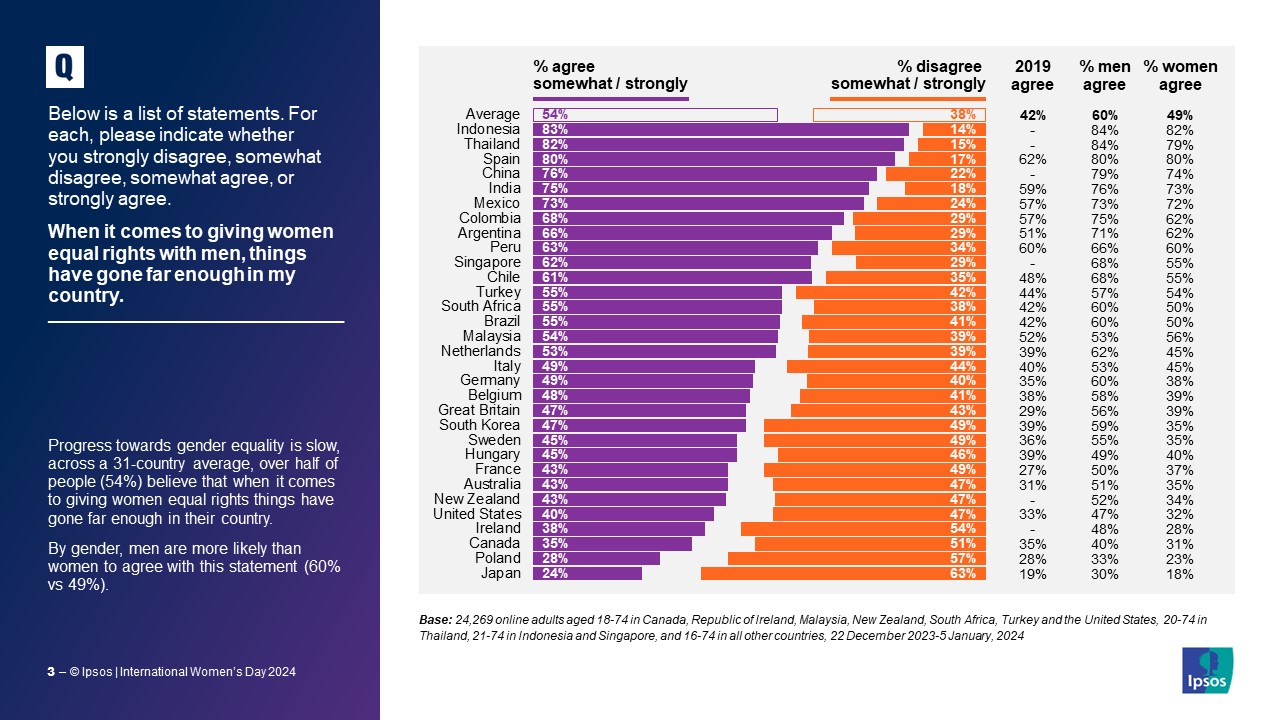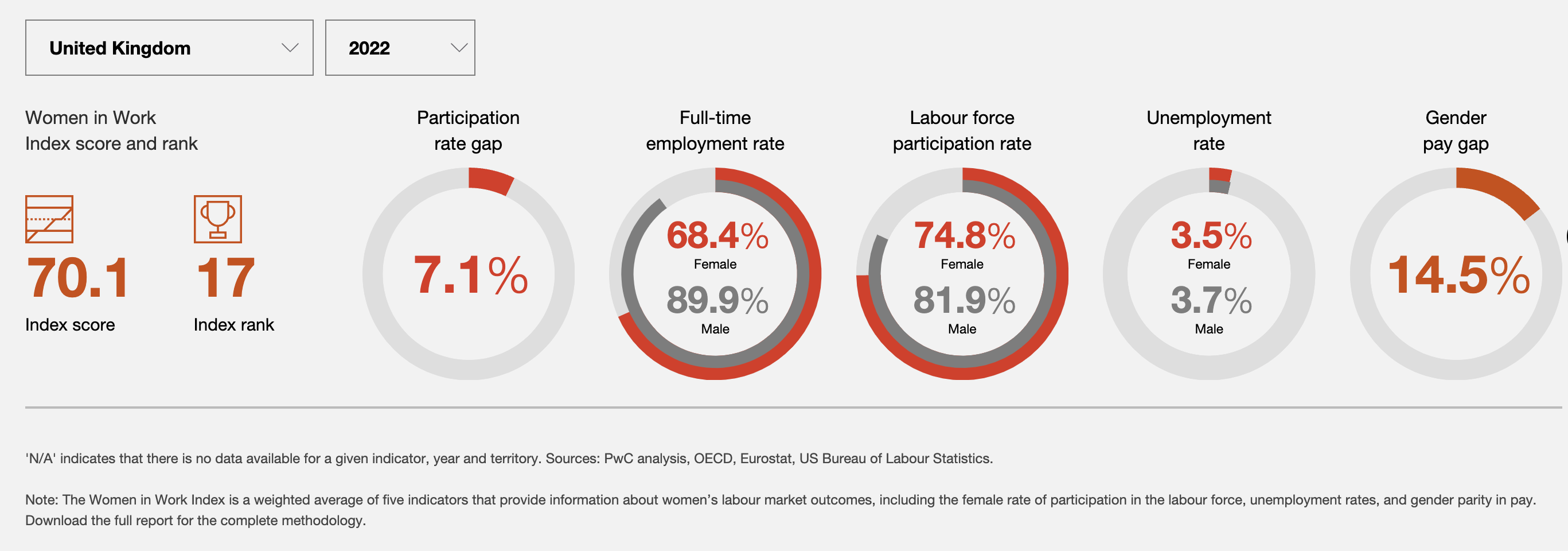International Women's Day 2024: Has women's equality really gone far enough?
In a recent global (and later viral) survey, nearly half (47%) of surveyed Britons agreed that women's equality has gone too far. It's an increase from 38% last year, and nearly twice the percentage of the countries at bottom of the list such as Japan, Poland and Canada.

Do they have a fair point? If we compare our 2024 reality to the one 70, 100 or 200 years ago, it seems that the change for women and minorities equality has been so great that we might struggle for examples of what else could be achieved. As a recruitment company, we took a look at some numbers concerning women's equality in the workplace, to investigate whether we can all put our feet up and forget all about women's equality, or if the fight is not over yet.
Gender Pay Gap
The seemingly positive strides towards equality are unfortunately dampened by the persistent gender pay gap. The report by PwC highlights that this gap is widening in many countries, with the UK being a stark example. Even after accounting for relevant factors like experience, women in the UK are demonstrably paid 14.5% less than their male counterparts. This means that women earn 90p for every £1 that a man earns. The UK has consistently lagged behind the OECD average on this measure for the majority of the last decade. This glaring disparity points towards a concerning reality of bias and prejudice still influencing workplace remuneration.
Participation Rate Gap
Another concerning aspect identified in the report is the participation rate gap. While women are undoubtedly entering the workforce in greater numbers, the statistics still reveal a gap compared to men. The document says that the participation rate gap between men and women in the UK is 7.1%. This could be due to a multitude of factors, including societal pressures, lack of affordable childcare options, and workplace inflexibility in catering to working mothers' needs. Addressing these issues is crucial to ensure a more balanced and equitable participation rate.
Full-time Employment Rate
The article also sheds light on the full-time employment rate disparity. While women are increasingly entering the workforce, the number securing full-time positions continues to lag behind men. Women have a full-time employment rate of 89.9% and men have a full-time employment rate of 97%. This could be attributed to a variety of reasons, including a preference for part-time work due to childcare responsibilities or a lack of access to full-time opportunities. Regardless of the cause, this discrepancy necessitates further investigation and targeted efforts to ensure women have equal access to full-time work if they so choose.

A Step Back?
Despite the UK's Index score increasing by 1.1 points between 2021 and 2022, reflecting small improvements on most indicators, its rank fell from 13th place to 17th place - the largest annual fall in rankings experienced by any OECD country this year. This can be attributed to two key factors. Firstly, the gender pay gap in the UK actually widened from 14.3% in 2021 to 14.5% in 2022. This runs counter to the positive trend needed for true progress. Secondly, other countries are making strides towards gender equality at work at a faster pace than the UK. This means that the UK is not only failing to close its own internal gaps, but also falling behind the global curve. This highlights the need for a renewed focus on achieving gender equality in the UK workplace.
The fight is not over yet
This year's Women's Day, let's remember about this day's socialist roots, where fighting for labour equality was at its core. The fact that we've come far as a society, even within our lifetimes, doesn't mean we've achieved full equality yet, as all statistics show.
Learn more about our Diversity and Inclusion commitments: https://www.priorityrecruitment.co.uk/diversity-inclusion



















